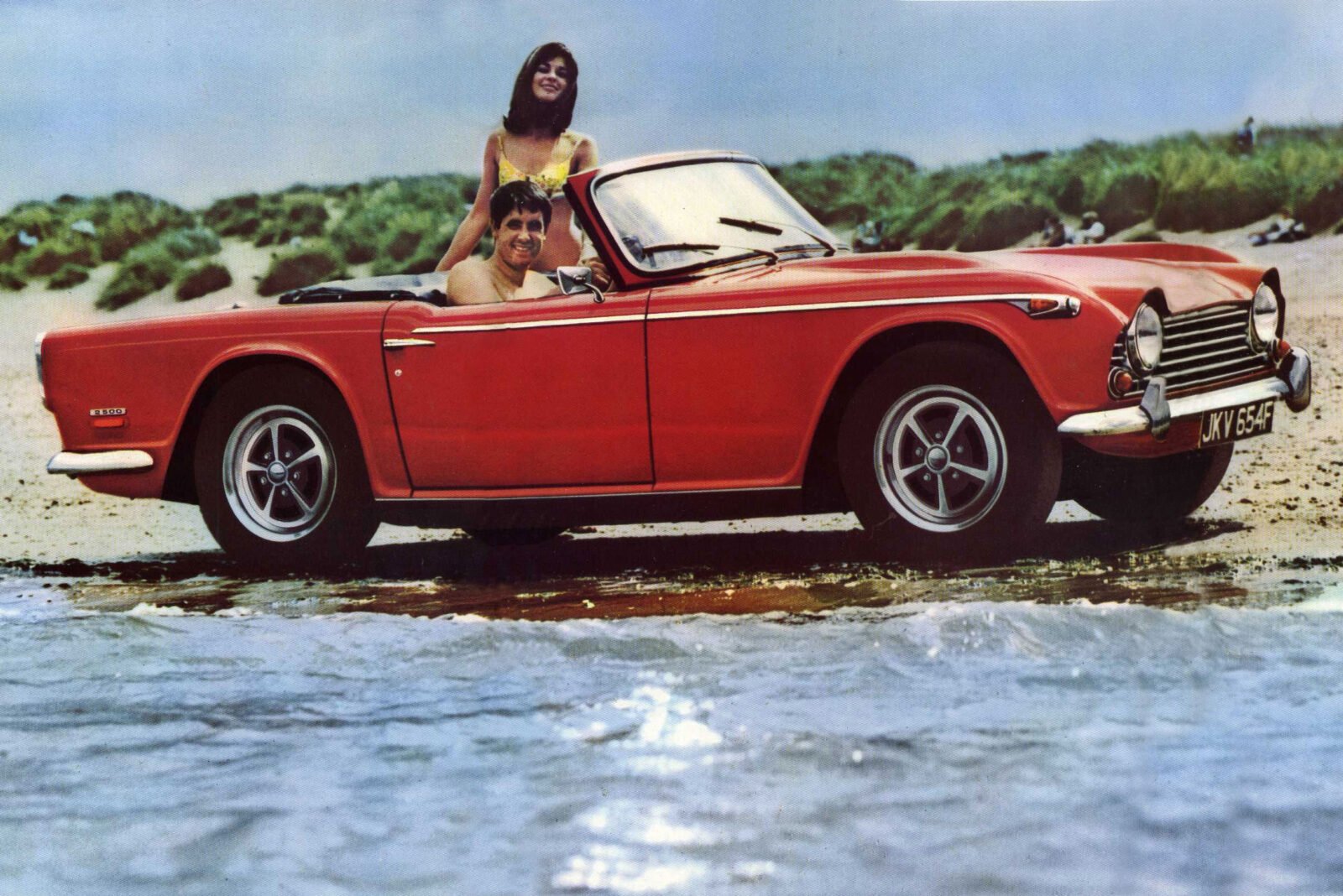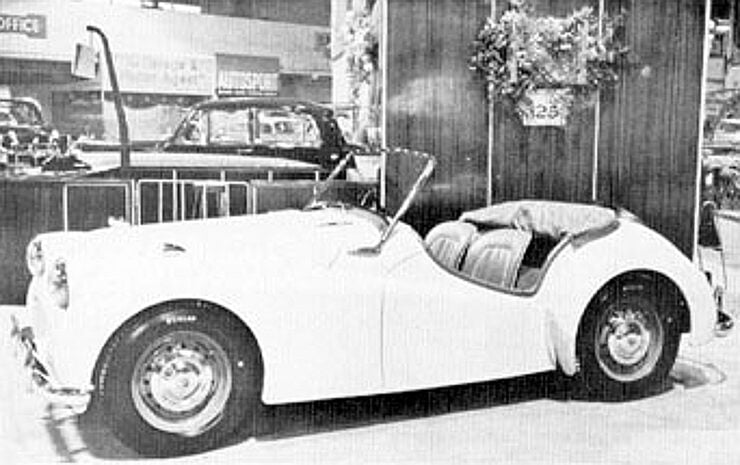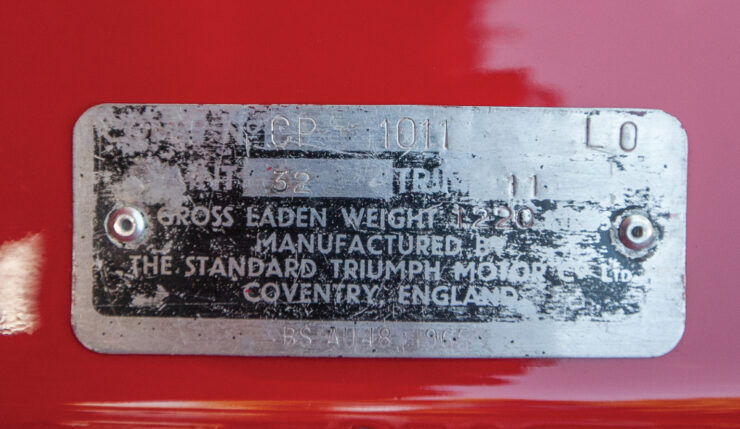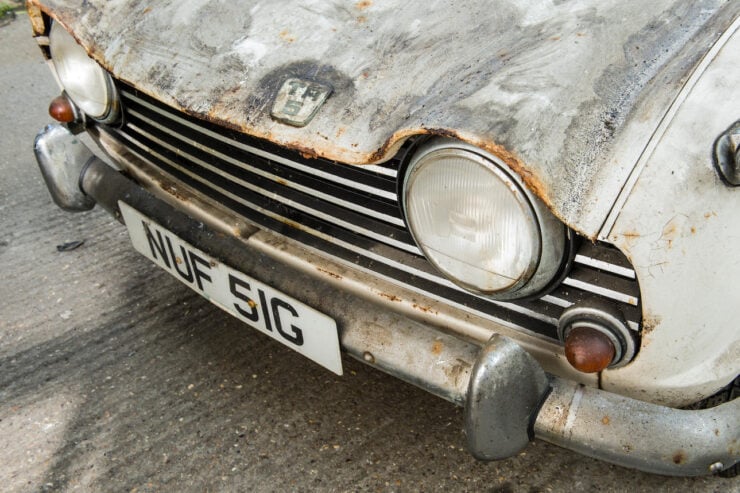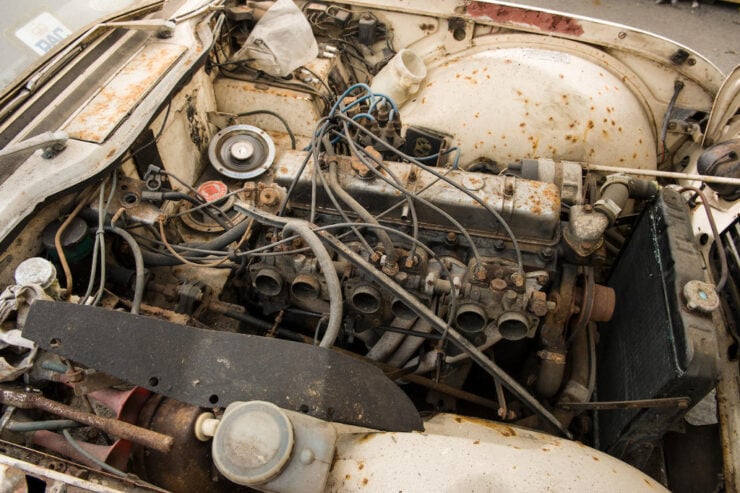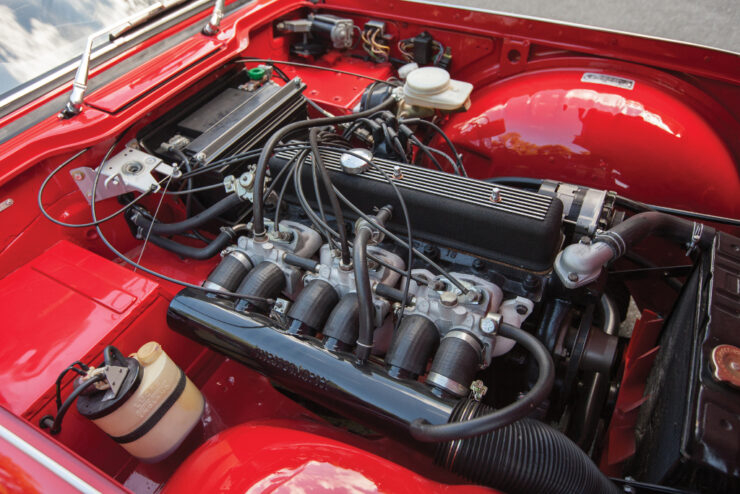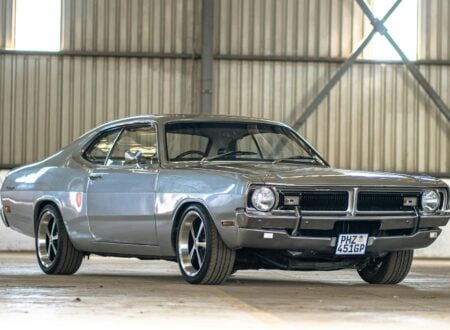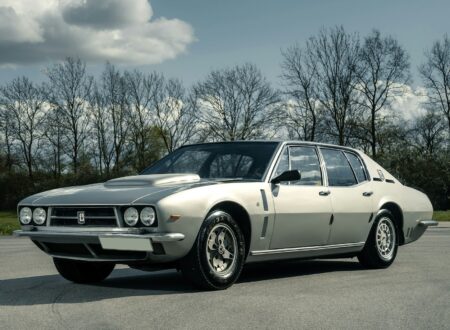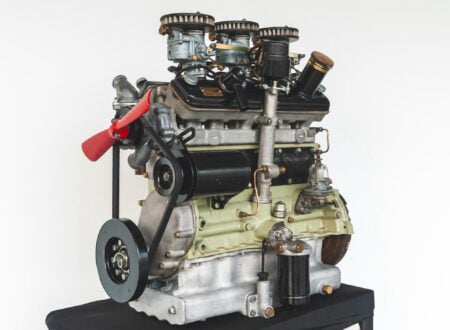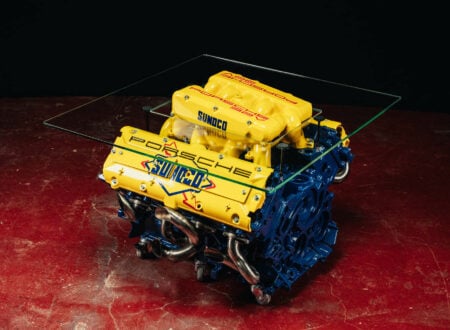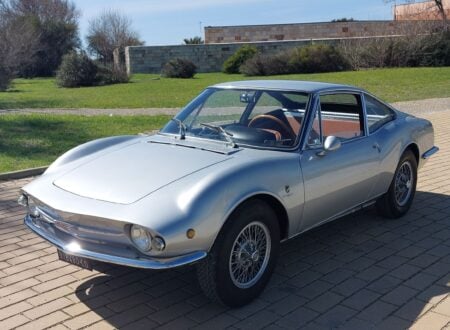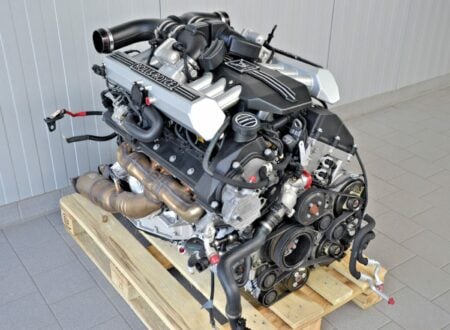The Triumph TR5 features body styling by Michelotti which is at once delicately beautiful and yet somehow also purposeful. The TR5 is regarded by many as epitome of the Triumph sports car of the 1960’s, and because it was only made for a brief period its rarity adds to its allure.
Beautiful to look at, and a delight to own and drive. The Triumph TR5 is undeniably one of the greatest of the great British sports cars of the 1960s.
It all began with a “Death Trap”
The story of the creation of the Triumph TR5 began at the Standard Motor Company in Britain which made the first public showing of its effort at creating a sports car back in 1952. That first sports car prototype was designated the 20TS and it was a sports car done on the cheap based on the 1938 vintage Standard Eight small two door sedan.
The head of Standard Motor Company, Sir John Black decided to get an expert opinion on this new 20TS sports car and so he asked someone who understood sports cars, Ken Richardson – the development engineer and also test driver for BRM (British Racing Machines) – to evaluate it. Ken Richardson’s evaluation was blunt and to the point: he described the 20TS as a “death trap”.
The design team at Standard-Triumph went to work on a new design. This car featured a ladder type chassis with cruciform central bracing, independent front suspension, live rear axle with leaf springs, and instead of being a “death trap” it turned out to be one of the great British sports cars of the 1950’s.
This was the Triumph TR2 and it would go on to father the TR3, and then the much improved TR4, TR4A, TR5, and TR6: these being some of the greatest and most iconic British sports cars ever made. Interestingly the TR2 and TR3 were also a model that inspired the design of the Daimler SP250 “Dart” V8 sports car of the early 1960’s, a car that was designed with a very similar chassis and suspension to the TR3, and which was fitted with the Edward Turner designed V8 engine.
A Michelotti Masterpiece
When Triumph decided to update the somewhat primitive but enormously enjoyable “Fred Flintstone” style of the TR3 they understood that the sports car market had changed. Britain was by this time just beginning the 1960’s and a decent level of comfort and weatherproofing was becoming “de-rigeur” for passenger cars of all styles.
So it was that as Britain was transformed into a fashion centre of the world so British cars also became fashion icons – most notably the Austin/Morris Mini and the Jaguar E-type (XKE). It was time for the Triumph TR sports cars to undergo a metamorphosis to become beautiful to look at and comfortable to drive.
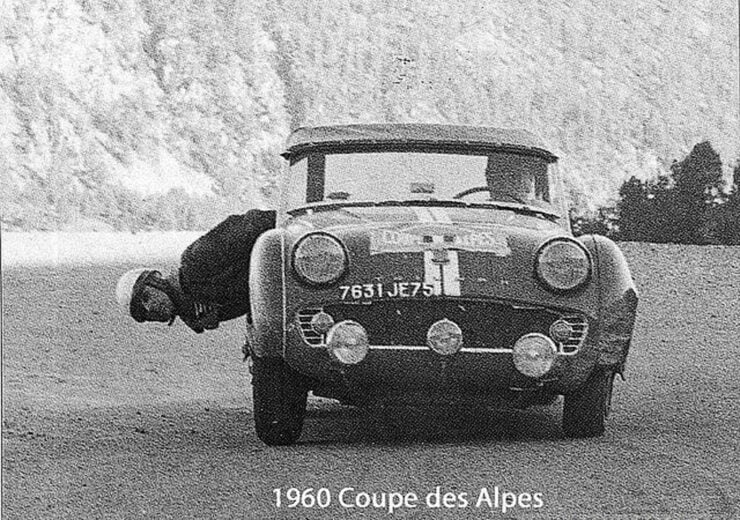

Keeping the chassis, engine and transmission largely unchanged the task of putting a new and gorgeous body on the next model TR sports car was handed to Italian designer Giovanni Michelotti who had opened his own design studio in 1959 after working for a number of other design studios including Ghia and Bertone.
Michelotti’s design did away with the “hairy chested” adrenaline pumping pure bred sports car style of the TR2 and TR3’s and replaced it with a car that would be appealing to people looking for comfort and style – yet also desiring to have that “hairy chested” Mr. Hyde sports car personality lurking beneath the pretty and civilized Dr. Jekyll exterior.
Michelotti did not create a car that was trying to be beautiful in the sense the Jaguar E-type was, he created a car with delicate lines, carefully crafted aesthetics giving it a unique character: and it is this original Michelotti design that persisted throughout the TR4, TR4A and TR5 models that has made the TR5 the most sought after prize of the whole series.
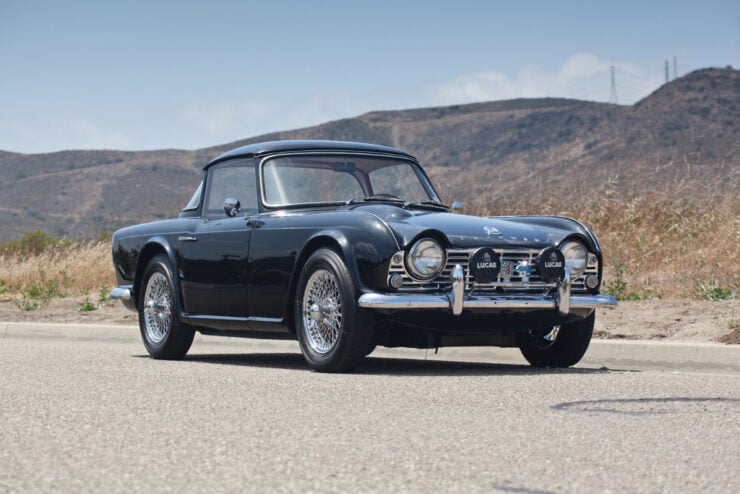

This first iteration of the Michelotti design was the TR4, a car with wind-up side windows, dashboard ventilation and decent passenger car comfort, and it was offered in either soft top “roadster” (i.e. drop head coupe) or coupe versions.
The coupe version was a pioneering design which incorporated a fixed rear section incorporating the rear window, with a removable metal overhead centre roof, creating what would later come to be known as a “Targa” roof.
For the hard top Triumph also offered a folding canvas “Surrey Roof” which could be fitted in place of the central overhead metal one. (for early TR4’s the metal roof was of aluminium while later cars had steel.) The advantage of the “Surrey Roof” was that it could be folded up and carried in the boot whereas the metal one could not.
The TR4 remained in production from 1961 to 1965 by which time it needed some upgrading to make it a more attractive purchase than its competitors such as the MGB and the big Austin-Healey 3000.
The TR4, like the MGB and the big Austin-Healeys, featured a live rear axle with leaf springs – sometimes unkindly referred to as a “horse and cart” rear suspension. Triumph decided that modifying the TR4 to give it a fully independent rear suspension would give their car the upper edge in handling and comfort so the TR4 chassis was substantially revised to provide that.
The new rear suspension comprised semi-trailing arms with coil springs, and, strange though it will seem to us today, lever-arm shock absorbers. The new model was dubbed the TR4A and it was in production from 1965 until 1967.
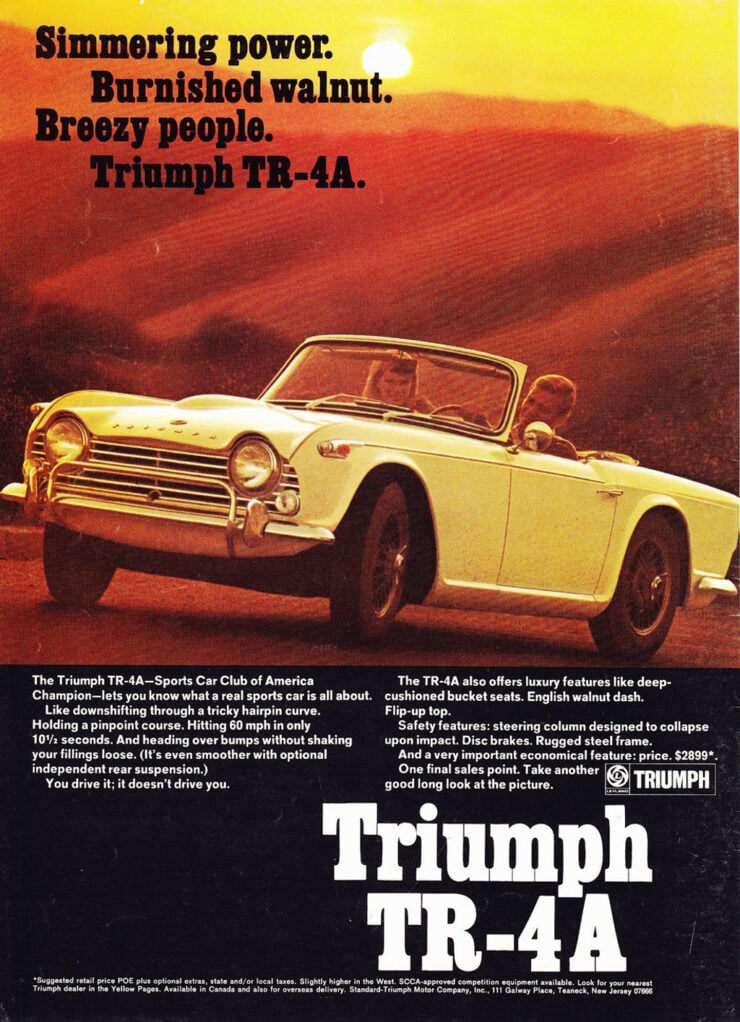

Triumph could not afford to sit on their hands however. The Austin-Healey had gone from being powered by a 2.66 litre four cylinder engine to having first a 2.6 litre six breathing through no less that three SU carburettors, and then a 3.0 litre six with twin SU’s.
The TR4A needed more power with which to get its edge back over its rivals. Triumph had a suitable six cylinder engine that was used in such cars as the Triumph 2000 sedan: and it was an engine that could be slipped into the TR4A’s engine bay with modest tweaking.
However a mere two litre six would not compete with the big Healey so Triumph increased the capacity to 2,498cc, and wisely did not stop there but also went for a new and exotic Lucas Petrol Injection system (i.e. mechanical fuel injection).
The camshaft was tuned to optimize the advantage of the fuel injection system and the resulting engine delivered a useful 150 bhp. With this Triumph had a car that incorporated a tad more performance than the big Healeys, better handling, and power to out accelerate an Austin-Healey 3000, all of it wrapped in pretty Michelotti bodywork. This then was the birth of the TR5
Enter the TR5
The Triumph TR5 entered production in 1967, the same year production of the Austin-Healey 3000 MkIII ended, and it was well received in Britain and non-US markets. Because of US emissions regulations Triumph wisely decided to create a specific North American model, which was dubbed the TR250.
The TR250 was a bit less exciting than the TR5 being fitted with twin Zenith-Stromberg carburettors and delivering a “ho-hum” 104bhp. For Americans, who were used to V8 engines that delivered much more grunt and sounded wonderful, the TR250 could only appeal to a niche market.
That being said the niche market that the TR250 filled accounted for no less than 8,484 cars produced, TR5 production totaled 2,947 of which 1,161 were made in right hand drive for the UK and Commonwealth markets, while 1,786 were made in left hand drive for sale in Europe.
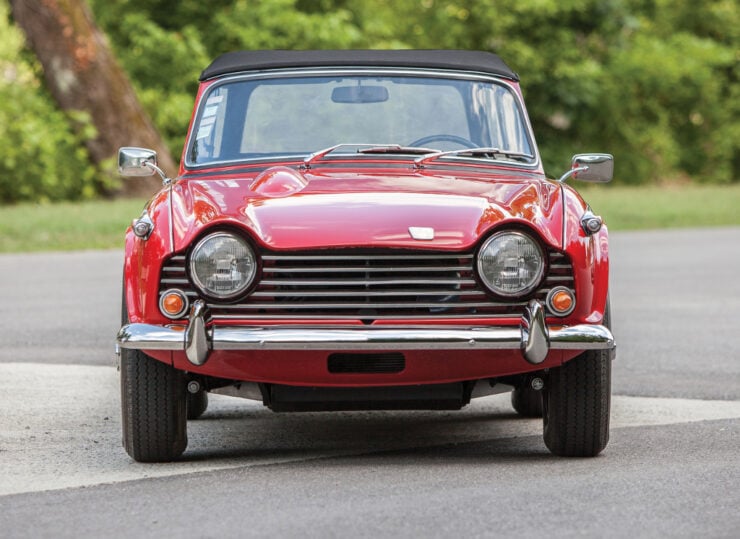

Because the TR5 production number is only a third of TR250 production, combined with its only being in production for a mere thirteen months between August 1967 until September 1968, this makes the TR5 a rare bird among its siblings, and that rarity, combined with the attractiveness of this last of the Michelotti styled cars, has served to make it a rather desirable item.
Buying a Triumph TR5
Perhaps the first thing to evaluate when you are looking at a potential “TR5” to purchase is whether or not it is in fact a genuine factory made TR5 or if it has been a conversion of a TR4A or a TR250?
The chassis number for a genuine TR5 will start with “CP…”, a TR4 will begin “CT…” and a TR4A “CTC…”, while the TR250 American model chassis number will begin “CD…”. Given that a genuine TR5 is more rare, and thus more desirable and valuable, there are those who will do a “restomod” on one of the more common models to try to pass it off as what it isn’t. So let the buyer beware.
You should expect to find the factory commission plate on the nearside front inner wheel arch.
Once you’ve examined that the commission plate seems to be in order it’s wise to do a check for accident damage.
Some types of accident damage are not so difficult to pick but misalignment of the chassis can be more tricky and is best done by an expert who has the appropriate jig to evaluate the chassis and body alignment. Without access to such equipment you should get the car on a level surface and look at how it sits, even use a tape measure to measure ground clearance at different points left and right to try to verify if there has been twisting.
Check the suspension and steering components especially suspension mounting points
Check the fit of the doors and how they open and close, both sides should look the same and feel the same when opened and closed, and likewise the boot (trunk).
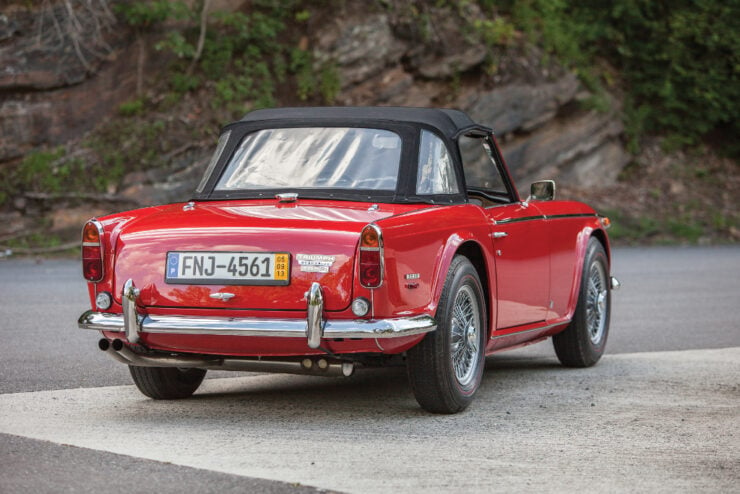

After assessing if there is any evidence of the car having been kerbed, rolled, or involved in an impact, the next thing to look for is evidence of rust – either repaired or not repaired.
Rust in the chassis can be hidden where it comes up against the body especially. Have a look for any evidence of bulging or sagging in the centre cruciform area, check the mounting points for the differential and suspension mounting points.
Tap in various locations to hear whether you get a nice clear “clang” indicating healthy metal or an ominous dull “thud”, an indicator of hidden rust. Of course if you tap in a place where a shower of bits of brown “car cancer” precipitates you get a good impression of just how nasty things could be. So hope for a nice clean clang of healthy metal wherever you tap with your little hammer.
Back in the 1960’s the British motor industry was not known for the efficacy of its rust-proofing. We used to say that British cars came “rust free” which meant that the manufacturer gave you the rust for nothing.
Look in all the usual suspect places for car cancer in the body – which is anywhere that mud and water would collect, not to mention salt if the car has traveled in a salt road environment. Sports cars are often shown in advertisements racing along a beach – which is only fine if the owner has been conscientious about hosing off the salt water and effects of that bracing salty sea air.
Similarly if the car has spent extended periods of time at the seaside then the prognosis tends not to be good unless the owner has given it a good watering and dose of rust preventative – Fishoilene for example.
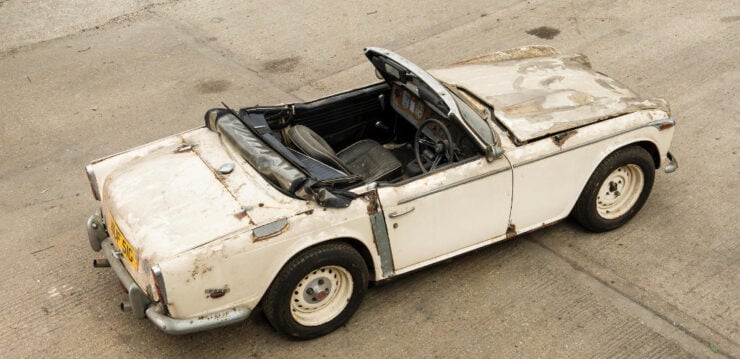

Chassis weakness can be exposed by jacking up one end of the car and seeing how the doors open and close.
As you are probably well aware doors need to be checked top and bottom for rust, water can accumulate inside a door and if the bottom drain holes are blocked sometimes you will even hear water sloshing around when you open a door, or when driving, and where there’s wetness expect rust.
The footwells also need to be looked at: lift up the floor coverings and look for signs of corrosion hiding under there. Also look for bodged repair work – people have been know to repair rust in the footwell floor by fixing new metal over the old rusty floor: a “repair” that is going to become the cause of much wailing and gnashing of the teeth for an unwitting new owner at some point.
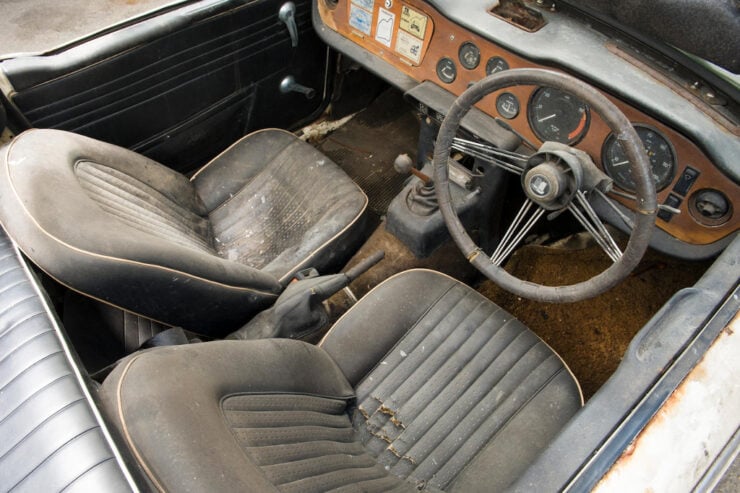

Like many British cars of the 1960’s the TR5’s use seams between the rear wings and the rear deck. Ensure that the seams are in fact there and that someone has not decided to cover up problems with body filler. A dab of body filler may cover up a multitude of evils but its a temporary cover and it will come apart one day.
Don’t forget to also look for signs of rodent activity. Mice and rats like to nest in a nice warm car, especially one that’s been left idle for a period of months.
For example, a few years ago when I was working in Asia one of my colleagues had his car stored in a barn on the family farm and when he returned to Canada he found that mice had been busy eating his 1960’s Ford Mustang from the inside out. So look for signs of nesting, droppings etc.
Mechanically the TR5 is pretty solid and conventional. The front suspension/steering uses old fashioned trunnions which are machined of cast bronze or brass. These require regular lubrication or they progressively stiffen putting excess strain on related components.
The drive train on any manual sports car will need to be assessed for clunks caused by the strain on the components caused by enthusiastic or rough driving.
The gearbox of the TR5 is an all synchromesh four speed manual. This gearbox has a typically British feel being very positive. It tends to show its age around 100,000 miles and may grumble and even jump out of gear – especially second – which indicates it needs a rebuild.
The engine used in the TR5 is the 2.5 litre Triumph six cylinder. The most important caution with this engine is to check for crankshaft end play. To check this try pushing and pulling on the pulley at the bottom of the engine, if there is more than 0.015″ it means that the crankshaft thrust washers are worn and due for replacement before they fail: such a failure will cause serious damage to the engine.
The crankshaft thrust washers can wear to the point they literally fall out, and if this has happened when you pull and push on the crankshaft pulley you will hear a “clunk”, which means the engine is due for an extensive rebuild or replacement.
The Triumph TR5 engine was built using the then new Lucas Petrol Injection fuel system, and it was fitted with a crankshaft optimized for that. This fuel injection system had a bug that TR5 owners should be aware of. The bug manifests itself if the fuel level in the fuel tank is allowed to drop below about three gallons (Imperial).
Once this low fuel level is reached the fuel in the tank would start to become excessively aerated by being agitated by the normal movements and vibrations incurred in driving. Unused fuel was passed back to the fuel tank via an outlet in the tank that was close to the fuel pump intake. Gradually this mix would become increasingly aerated as it was recycled between the fuel system and the tank with the result that the engine’s running would be affected.
The cure for the problem was to add fuel to the tank if it occurs – or better still to never let the fuel level drop below a quarter of a tank. If you own a sports car of this vintage its good to be aware that the old style fuel gauges tend to be a bit slow acting and its easy to get caught out if you allow the fuel level to drop below quarter.
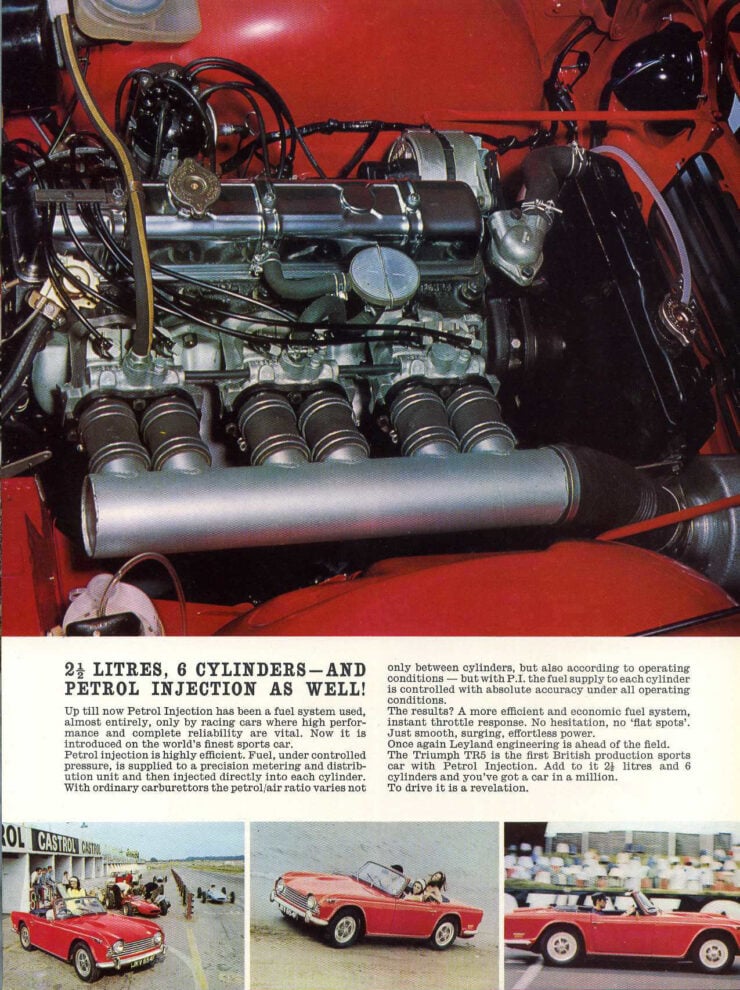
Specifications
Chassis and Body: Separate steel body and conventional ladder box section chassis with cruciform centre bracing.
Length: 153.6″ (3,902mm)
Width: 57.9″ (1,470mm)
Height: 46.1″ (1,170mm)
Wheelbase: 88.2″ (2,240mm)
Kerb Weight: 2,271lb (1,030kg)
Fuel Tank Capcacity: 11.22 Imperial gallons. 13.47 US gallons. 51 litres
Suspension, Steering and Brakes: Rack and pinion steering. Front suspension independent featuring upper and lower unequal wishbones, coils springs, and telescopic shock absorbers. Rear suspension fully independent by semi-trailing arms, coil springs, and lever arm shock absorbers. A limited number of the TR250 cars were fitted with the TR4 style live rear axle with leaf springs and sold at a cheaper price.
Disc brakes at the front, drums at the rear, servo assisted.
Wheels: 15″ 4.5 pressed steel. Tyres: TR5 165×15. TR250 185×15.
Engine:
TR5: 2,498cc in-line six cylinder with 9.5:1 compression ratio and fitted with Lucas Petrol Injection fuel system. Power 150bhp @ 5,500rpm. Torque 164lb/ft @ 3500rpm.
TR250: Same six cylinder engine as the TR5 but having a compression ratio of 8.5:1 and fitted with twin Stromberg 175CD carburettors. Power 104bhp @ 4,500rpm. Torque 143lb/ft @ 3.000rpm
Transmission: Four speed fully synchromesh manual gearbox with optional Laycock de Normanville electric overdrive.
Performance:
TR5: Standing to 60mph achieved in under 9 seconds (typically 8.8 seconds approximately). Top speed claimed to be 125mph but on independent road tests was usually around 120mph. Fuel consumption around 20mpg (Imperial).
TR250: Standing to 60mph in 10.6 seconds. Top speed 107mph. Fuel consumption approximately 27mpg (Imperial)
Optional Equipment: Laycock de Normanville electric overdrive, wire wheels, Surrey Roof, air conditioning.
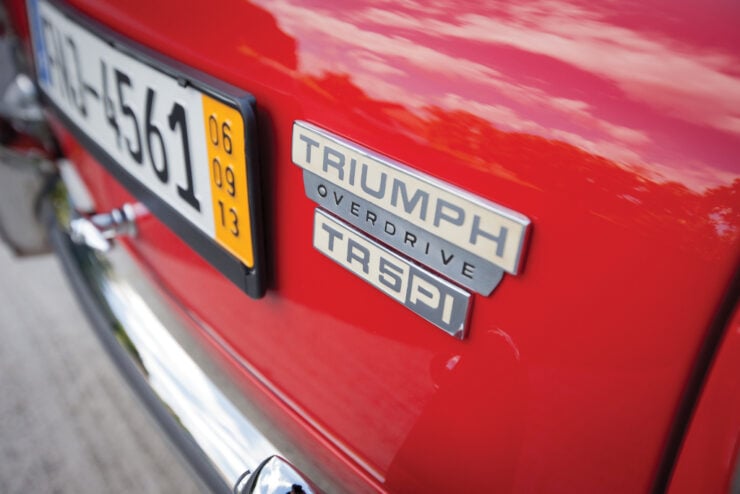

Conclusion
The Triumph TR5 has become a desirable collector sports car with the combination of the beauty of the Michelotti styling, excellent performance, delightful driving experience, relative ease of maintenance, and the car’s rarity all contributing to that desirability. That being said as you embark on your search for the right car for you be aware of the potential for imitations such as TR4A cars installed with a six cylinder engine to masquerade as a TR5, or a modified TR250 for example. Check on the history of any potential purchase and verify the chassis number as a part of your evaluation.
The TR5 is one of the most outstanding of all the British sports cars of that golden era of the 1960’s and there is an excellent enthusiast network and clubs to help owners support their cars. If you choose one I think you will have chosen one of the best classic cars to invest your time, effort and money into.
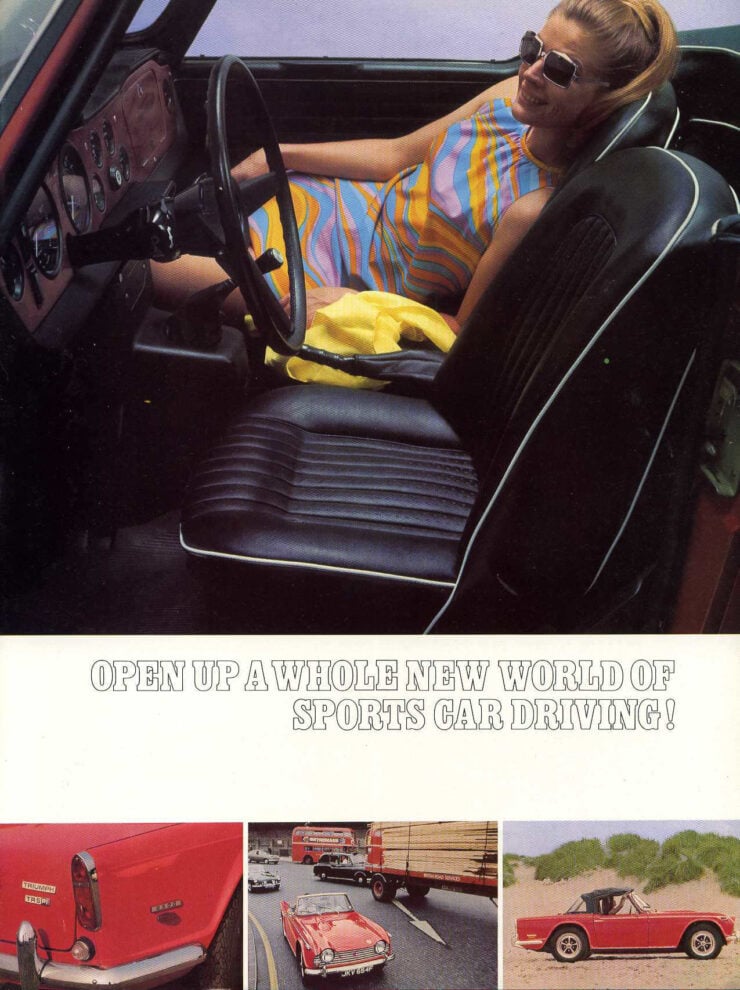
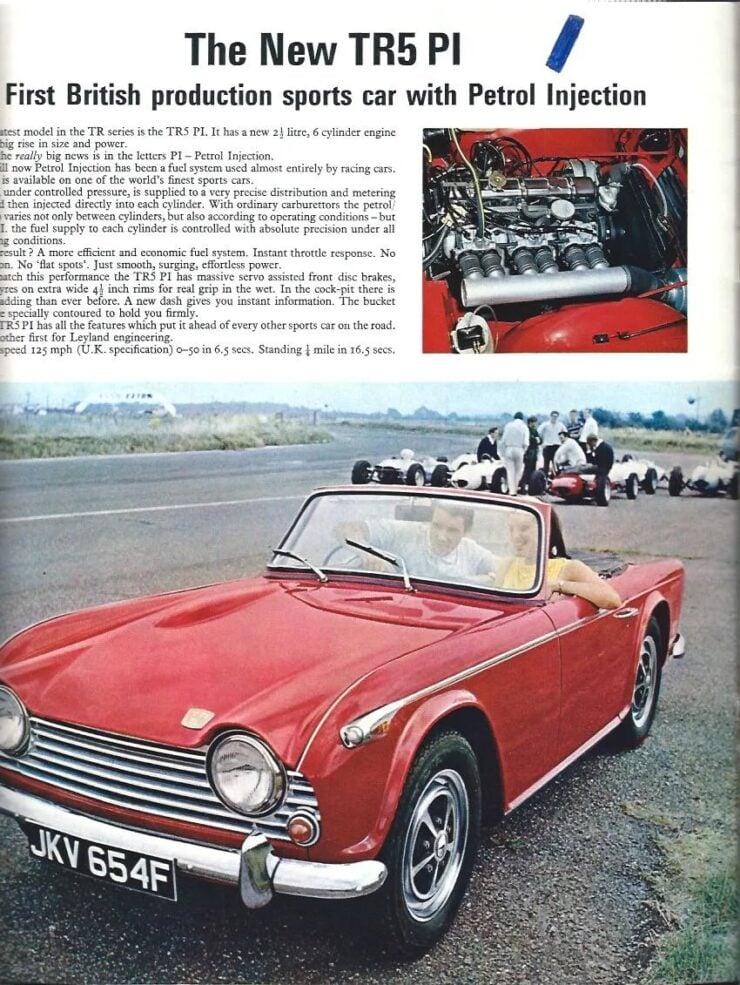
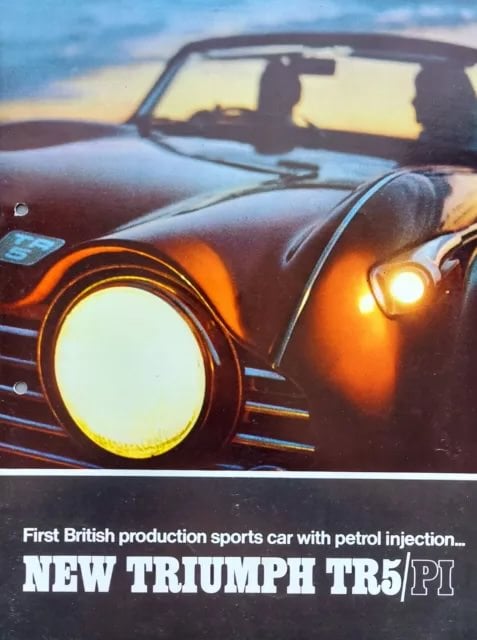
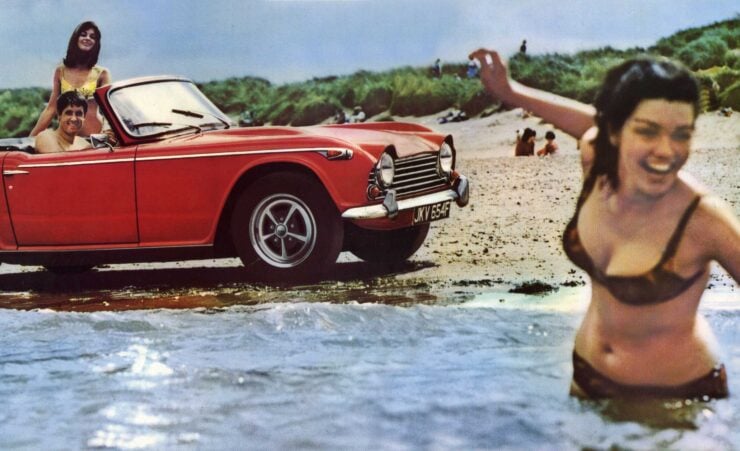
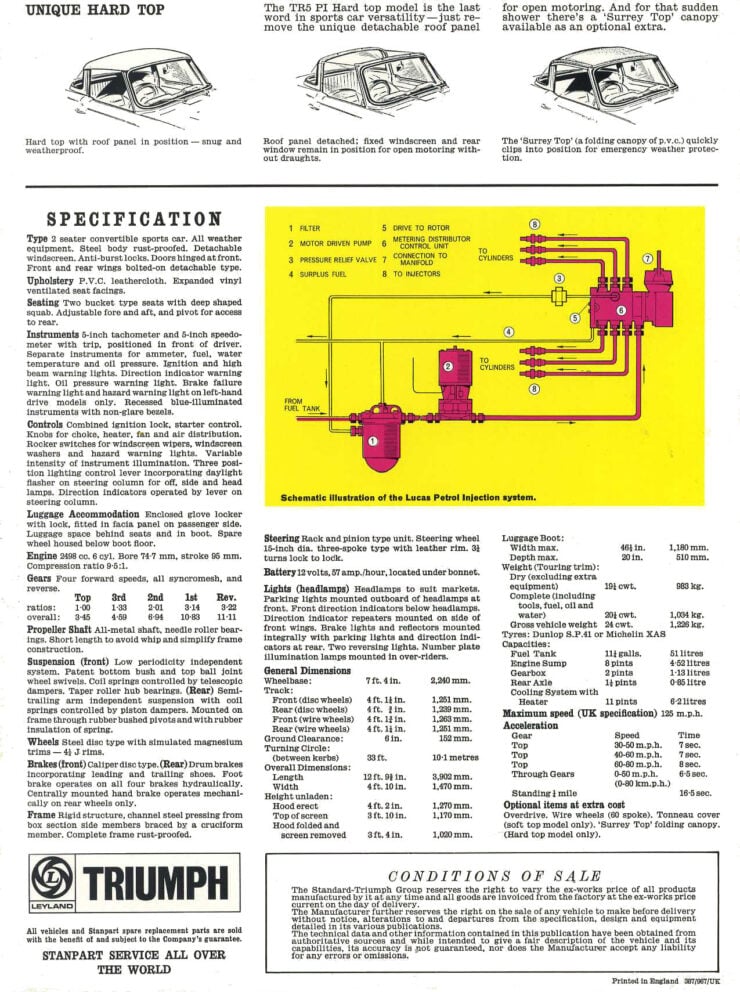
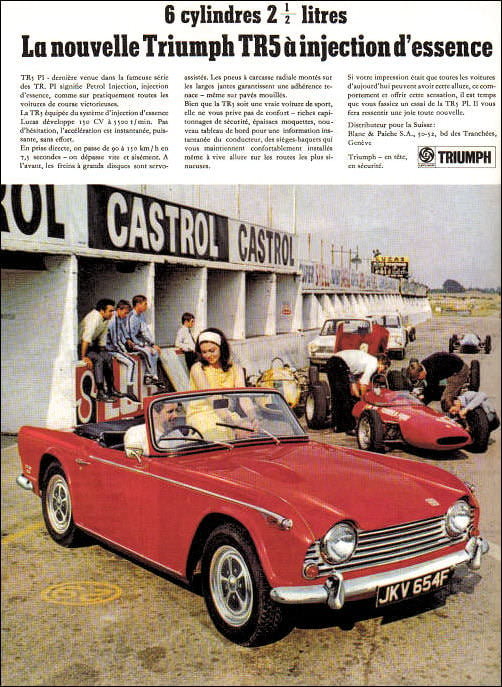
Picture Credits: British Leyland, Bonhams, RM Sotheby’s, Standard Triumph.

Jon Branch has written countless official automobile Buying Guides for eBay Motors over the years, he’s also written for Hagerty, he’s a long time contributor to Silodrome and the official SSAA Magazine, and he’s the founder and senior editor of Revivaler.
Jon has done radio, television, magazine, and newspaper interviews on various issues, and has traveled extensively, having lived in Britain, Australia, China, and Hong Kong. The fastest thing he’s ever driven was a Bolwell Nagari, the slowest was a Caterpillar D9, and the most challenging was a 1950’s MAN semi-trailer with unexpected brake failure.

